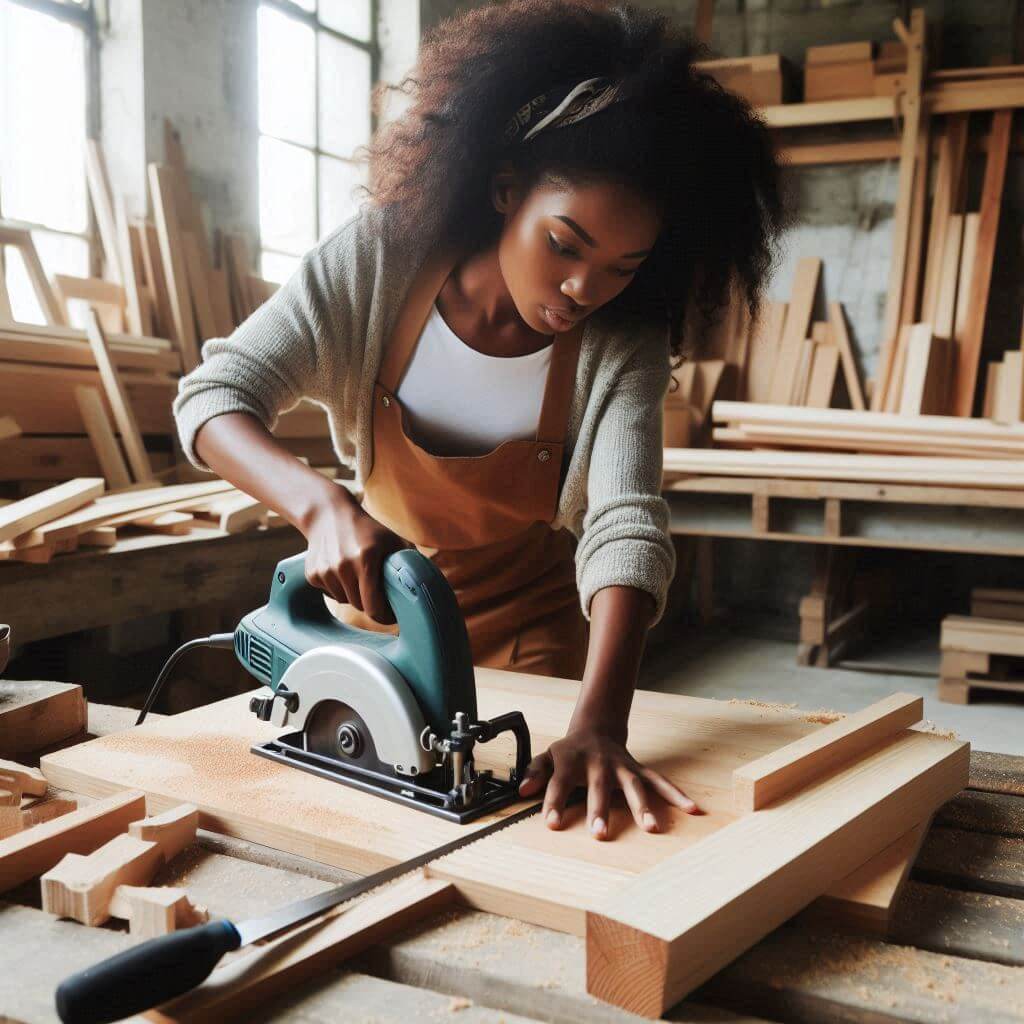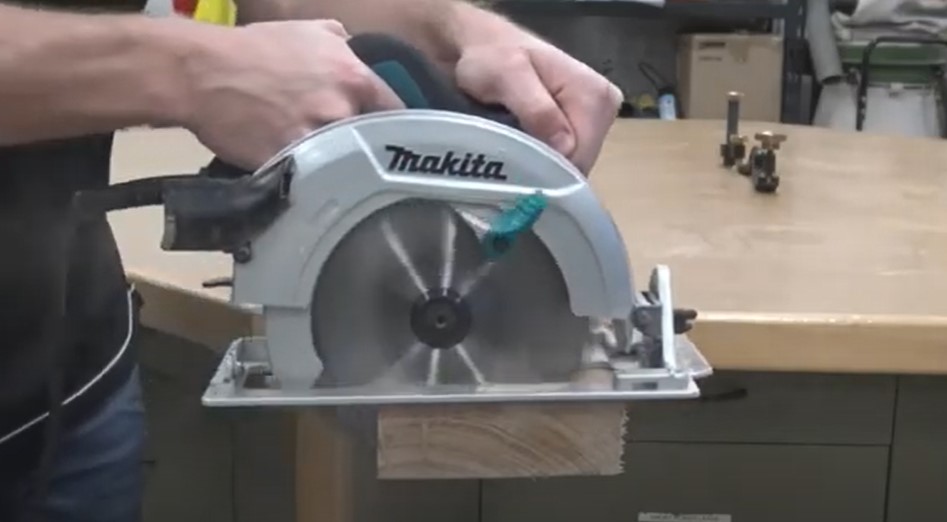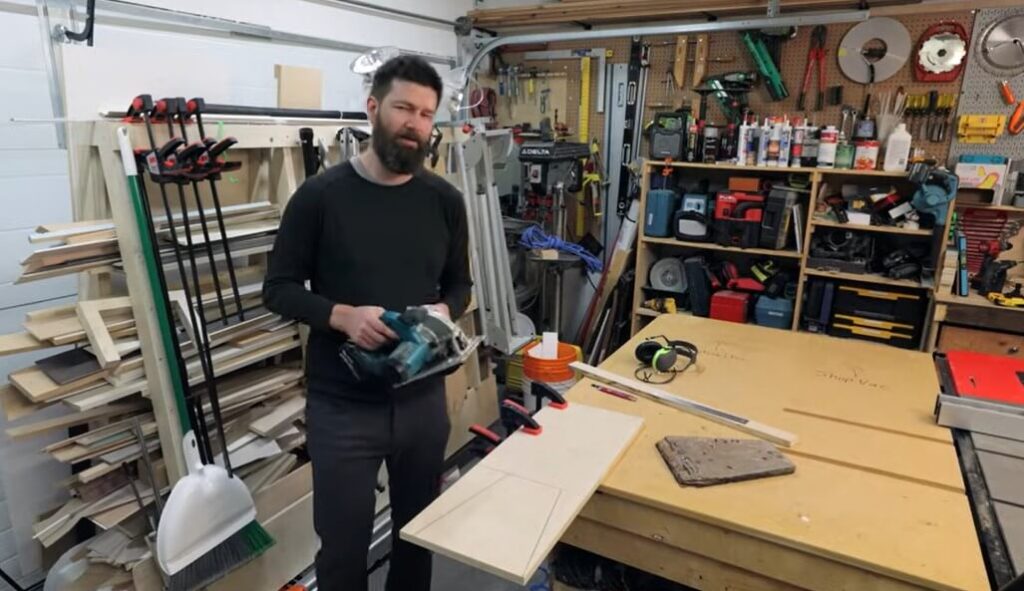If you’re a woodworker or a DIY homeowner, you’ve probably experienced the jarring moment when your circular saw kicks back. It’s not just startling; it can be downright dangerous.
But why does this happen, and how can you prevent it?
Circular saws kickback due to a lack of proper technique or safety measures. The saw blade may bind while cutting, causing it to forcefully kickback towards the operator.
To prevent this, ensure that the blade is sharp, the saw is properly adjusted, and the material being cut is stable and properly supported. Always use a push stick or similar device to guide the material through the cut, and keep your hands and body positioned safely away from the blade.
In this article, we’ll dive into the reasons behind circular saw kickback, provide practical tips to avoid it, and help you understand your tool better. Let’s make your woodworking projects safer and more enjoyable.

What Is Circular Saw Kickback?
Kickback is a sudden reaction that happens when the saw blade binds or gets pinched in the wood. This causes the saw to be forced back towards the user, often with alarming speed and power.
Imagine it like a car’s tires slipping on ice; you’re moving along smoothly, then suddenly you’re out of control. It’s the same with your saw — one moment it’s cutting fine, and the next, it’s jerking back at you.
Common Causes of Circular Saw Kickback
Understanding why kickback happen is the first step in preventing it. There are several common causes that can contribute to this dangerous phenomenon. Let’s explore each one in detail.
Blade Rotation Direction
One major cause of circular saw kickback can be the direction of blade rotation. If your saw’s blade is rotating in the wrong direction, it can lead to severe kickback. This typically happens when the blade is installed backward or upside down.
Blade Pinching
Pinching the blade can also cause a circular saw to backfire. When the wood you’re cutting closes in on the blade, it can pinch it. This is more likely to happen with wet or unseasoned wood.
As the blade binds, it can no longer cut smoothly, causing it to stall and kick back towards you. Always ensure that your workpiece is properly supported to minimize this risk.
Incorrect Blade Depth
Setting your blade too deep can increase the chance of kickback. The blade should be set just deep enough to cut through the material, but no more. Too deep, and it can snag on the wood, causing a sudden jolt.
A good rule of thumb is to set the blade depth so that no more than a quarter of an inch of the blade protrudes below the material.
Improper Support of Workpiece
If your workpiece is not properly supported, it can shift or bend during cutting, pinching the blade. Always use sawhorses or a sturdy workbench to support the material fully. This not only helps in making clean cuts but also prevents the material from closing in on the blade.
Blade Type
The type of blade you use in your circular saw can also contribute to kickback. Using the wrong blade type for the material you’re cutting can cause the blade to bind or snag, leading to kickback.
Using Dull or Damaged Blades
A dull blade requires more force to cut, which can lead to binding and kickback. Similarly, a damaged blade with missing teeth, bent tooth, crack, or warping can grab the wood unexpectedly. Regularly inspect your blades and replace them as needed to ensure smooth, safe cuts.
Kickback Safety Features
Modern circular saws come equipped with several safety features designed to minimize the risk of kickback. Understanding these features and using them correctly can greatly enhance your safety.
Electric Brakes
Many of the best circular saws now come with electric brakes, which stop the blade quickly when you release the trigger. This feature can prevent the saw from continuing to spin and potentially cause kickback after the cut is finished.
Riving Knives
A riving knife is a thin piece of metal behind the blade that keeps the cut sections of the wood from pinching the blade. It moves with the blade, maintaining a constant distance and preventing the wood from closing in on the blade.
Anti-Kickback Pawls
These are small, spring-loaded pieces that catch the wood if it starts to kick back. They act like teeth that grab onto the wood and stop it from being thrown back at you.
How to Prevent Circular Saw Kickback?
Preventing kickback involves a combination of using your tool correctly and maintaining it properly. Here are some practical steps you can take to minimize the risk.

Maintain a Firm Grip
Always hold the saw with both hands and maintain a firm grip. This gives you better control and allows you to react quickly if something goes wrong.
Stand to the Side
Position yourself to the side of the saw, not directly behind it. This way, if kickback occurs, the saw will be less likely to hit you.
Keep the Saw Blade Sharp
Regularly check and sharpen your saw blades. A sharp blade cuts more efficiently and reduces the risk of binding and kickback.
Use the Right Blade
Make sure you’re using the appropriate blade for the material you’re cutting. Different materials require different types of blades, and using the wrong one can increase the risk of kickback.
Maintain Proper Blade Speed
Using the right blade speed for the material you’re cutting can also help prevent kickback. If the blade speed is too high for the material you’re cutting, the saw can lose control and kick back.
Always choose the appropriate blade speed according to the manufacturer’s recommendations.
Rightly Adjust the Depth of the Blade
Making sure the saw blade is set to the proper depth can also impact whether or not you experience kickback. If the saw blade is set too deep, it can cause the blade to bind and increase the likelihood of kickback.
Check Your Setup
Before making a cut, ensure that your workpiece is stable and properly supported. Double-check the blade depth and adjust as necessary.
Choosing the Best Circular Saw
Selecting the right circular saw can make a significant difference in your woodworking projects and safety. Here are some factors to consider when choosing the best circular saw:
Power and Performance
Look for a saw with sufficient power for your needs. More powerful saws can handle tougher materials but might be heavier and more challenging to control.
Blade Size
The blade size determines the depth of the cut. Common sizes range from 6.5 inches to 7.25 inches. Choose a size that fits the majority of your cutting tasks.
Ergonomics
Comfort and ease of use are crucial. Look for a saw with a comfortable grip and a design that feels balanced in your hands.
Safety Features
Ensure the saw includes essential safety features like electric brakes, riving knives, and anti-kickback pawls.
Brand Reputation
Consider well-known brands that are trusted in the woodworking community. They often offer better warranties and customer support.
Maintaining Your Circular Saw
Proper maintenance of your circular saw is vital for its performance and longevity. Here are some maintenance tips to keep your saw in top shape.

Regular Cleaning
Dust and debris can build up in your saw, affecting its performance. Clean your saw after each use, especially around the blade and motor housing.
Blade Care
Inspect your blades regularly for signs of wear and damage. Clean the blades to remove resin buildup, which can cause the blade to bind.
Lubrication
Keep the moving parts of your saw well-lubricated. This includes the blade guard and any other pivot points.
Check for Loose Parts
Periodically check all screws and bolts to ensure they are tight. Loose parts can affect the saw’s stability and safety.
Proper Circular Saw Technique
Using the correct technique is essential for both the quality of your work and your safety. Here are some tips to improve your cutting technique.
Start with a Pilot Cut
Begin with a shallow pilot cut to guide the saw and reduce the risk of binding.
Use a Guide
A straightedge or guide can help keep your cuts straight and prevent the saw from wandering.
Avoid Forcing the Saw
Let the saw do the work. Pushing too hard can cause the blade to bind and kick back.
Stay Focused
Always pay full attention when using the saw. Distractions can lead to mistakes and accidents.
How to Reduce Circular Saw Kickback?
Conclusion
Circular saw kickback is a common but preventable issue. By understanding the causes and following best practices, you can greatly reduce the risk of kickback and enjoy safer, more efficient woodworking. Remember to maintain your saw, use it correctly, and choose the best circular saw for your needs.
Stay safe and happy cutting!
FAQs: Why Does My Circular Saw Kickback?
Why does my circular saw kickback?
Circular saw kickback happens when the blade binds or pinches in the wood, causing the saw to be forced back towards the user. This can be due to incorrect blade depth, dull blades, improper support of the workpiece, or not using the right blade for the material.
How can I prevent circular saw kickback?
To prevent kickback, maintain a firm grip on the saw, stand to the side while cutting, keep the blade sharp, use the appropriate blade, and ensure your workpiece is stable and properly supported.
What safety features should I look for in a circular saw?
Look for features like electric brakes, riving knives, and anti-kickback pawls. These features help prevent kickback and enhance your overall safety.
How often should I change my circular saw blade?
Change your blade when you notice it becoming dull, damaged, or if it’s not cutting as smoothly as before. Regular inspection and maintenance will help you determine the right time.
What is the best circular saw for a DIY homeowner?
The best circular saw for a DIY homeowner is one that balances power, ease of use, and safety features. Brands like DeWalt, Makita, and Bosch offer reliable options with good ergonomics and essential safety features.
Recent Posts
Woodworking in 2025 is all about efficiency, precision, and smart technology. Whether you're a beginner or a seasoned craftsman, having the right tools can make all the difference. Here are the top 7...
Ever tried drilling into a piece of wood only to end up with a splintered mess or a wobbly hole? Yeah, it's more common than you think. Wood might seem like an easy material to work with, but...

